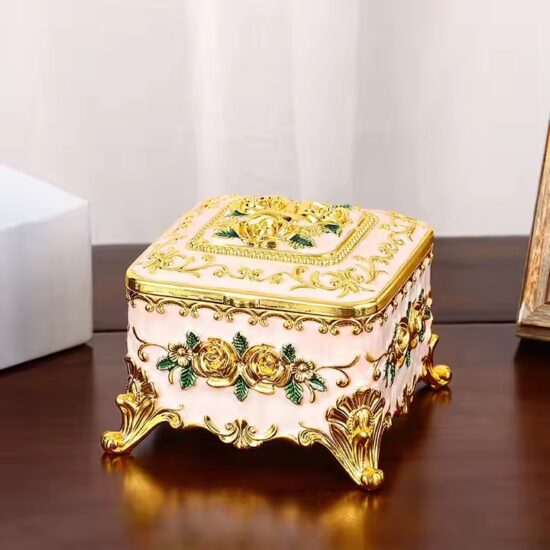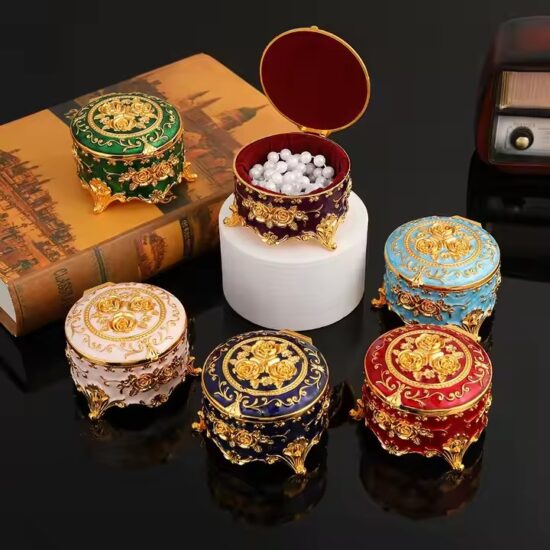jay@nbdho.com
Analysis of Common Metal Materials Used in Jewelry Boxes
Analysis of Common Metal Materials Used in Jewelry Boxes
Metal jewelry boxes are favored for their strength, elegance, and customizability. But not all metals are created equal. Each type of metal used in jewelry box manufacturing has its own characteristics, cost implications, design flexibility, and ideal use cases. Understanding these differences is essential for brands, wholesalers, and manufacturers who want to choose the right packaging material to align with their product positioning and target market.
Below, we analyze the most commonly used metals in the production of jewelry boxes: tinplate, aluminum, stainless steel, and brass.
1. Tinplate
Overview:
Tinplate consists of thin steel sheets coated with a layer of tin to prevent corrosion. It is lightweight, affordable, and easy to mass produce with custom prints and embossing.
Properties:
-
Lightweight and flexible
-
Corrosion-resistant due to tin coating
-
Easily moldable into different shapes and sizes
-
Supports CMYK printing, spot color, embossing
Advantages:
-
Cost-effective for bulk production
-
Great for branded, colorful packaging
-
Recyclable and sustainable
Applications:
-
Gift jewelry boxes
-
Promotional items
-
Entry-level or youth market jewelry
2. Aluminum
Overview:
Aluminum is a lightweight, rust-free metal with a clean, modern appearance. Its sleek look and corrosion resistance make it a popular choice for portable and premium packaging.
Properties:
-
Naturally rust-resistant
-
Lightweight but stronger than tinplate
-
Accepts anodized finishes for color variations
-
Resistant to UV and chemical exposure
Advantages:
-
Durable and long-lasting
-
Offers a premium, modern aesthetic
-
Can be anodized in different colors
Applications:
-
Travel jewelry cases
-
Contemporary or minimalist brand packaging
-
Custom engraved gift boxes
3. Stainless Steel
Overview:
Stainless steel is a strong, heavy-duty material known for its high resistance to tarnishing and corrosion. It is often used in high-end or secure packaging.
Properties:
-
Strong and highly durable
-
Resistant to moisture, rust, and tarnish
-
Harder to shape but perfect for minimalist or industrial designs
Advantages:
-
Superior strength and longevity
-
Unmatched protection for valuable items
-
Modern, sleek appearance
Applications:
-
Luxury jewelry box lines
-
Unisex or industrial-inspired packaging
-
Secure storage boxes with locking systems
4. Brass (and Bronze)
Overview:
Brass and bronze are copper-based alloys with a rich, warm gold tone. These metals are commonly used in vintage, antique-style jewelry boxes that emphasize detail and craftsmanship.
Properties:
-
Heavier than aluminum and tinplate
-
Offers beautiful patina over time
-
Easily engraved or embossed
-
Can be polished or aged for different effects
Advantages:
-
Elegant and traditional appearance
-
Ideal for heirloom-style packaging
-
High perceived value
Applications:
-
Premium gifts and collector’s editions
-
Boutique or heritage-inspired jewelry brands
-
Decorative home-use storage boxes
Comparison Table
| Metal | Weight | Corrosion Resistance | Customization | Best For |
|---|---|---|---|---|
| Tinplate | Light | Medium (with coating) | Excellent | Promo packaging, low-cost custom boxes |
| Aluminum | Light | High | High (anodized, engraved) | Travel, modern brands |
| Stainless Steel | Heavy | Very High | Medium | Luxury, industrial or secure boxes |
| Brass | Heavy | Medium (can tarnish) | High | Vintage, classic luxury, artisan boxes |
Conclusion
Each type of metal used in jewelry box production brings its own set of strengths. Tinplate offers affordability and printability, aluminum provides a modern aesthetic with excellent durability, stainless steel ensures ultimate strength and protection, while brass delivers a vintage charm and high-end appeal.
By understanding the characteristics and ideal applications of these materials, brands and wholesalers can select the best metal to match their design goals, budget, and market audience—whether for mass-market jewelry, luxury gifting, or boutique displays.





